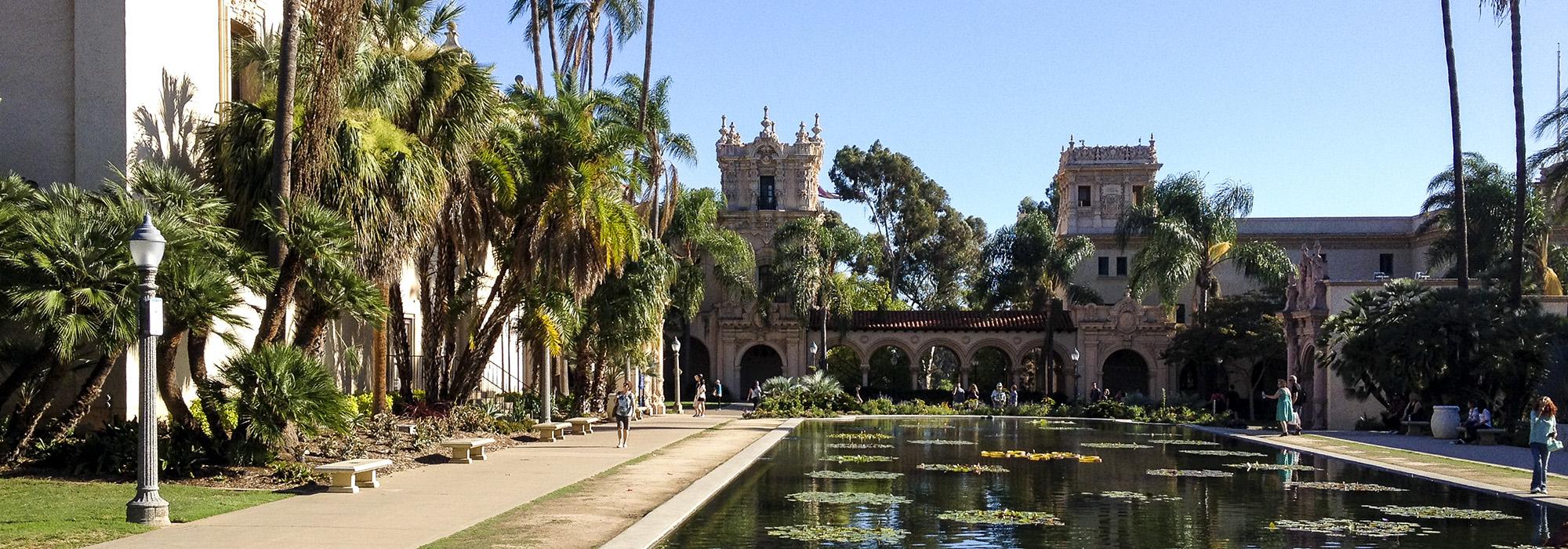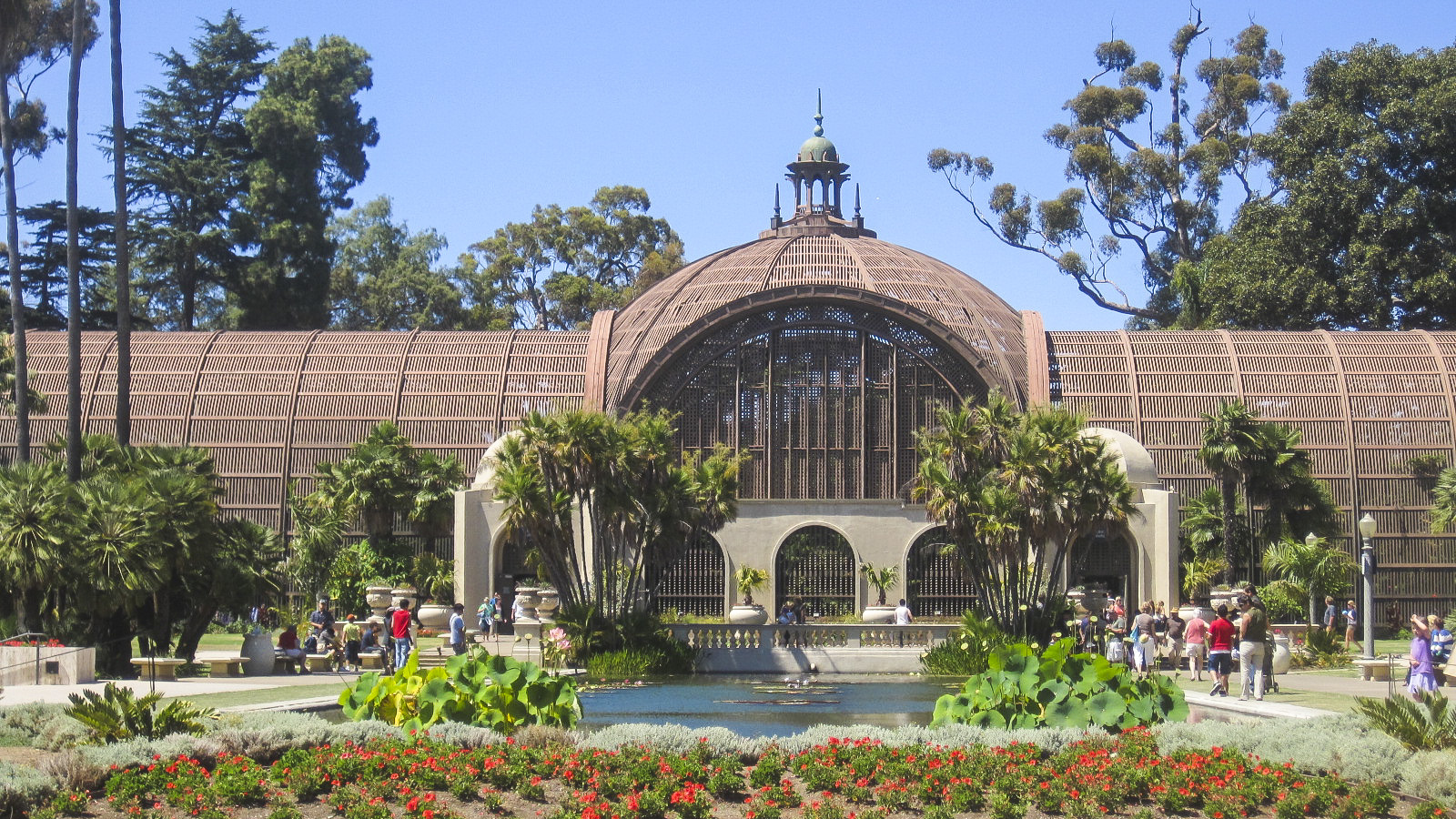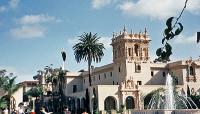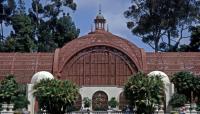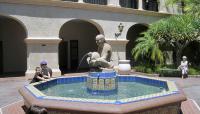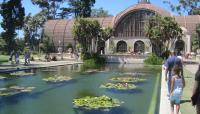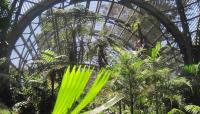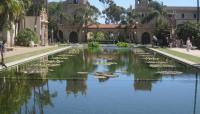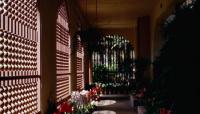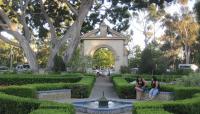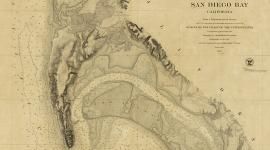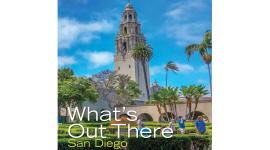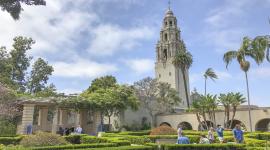Landscape Information
Overlooking downtown San Diego, Balboa Park has evolved from its nineteenth-century beginnings as City Park through decades of new construction for fairs, including the Panama-California Exposition of 1915-1916 and the California Pacific International Exposition of 1935-1936. The site for both expositions was situated on a mesa 300 feet above sea level, adjacent to Cabrillo Canyon on the eastern side of the park. Designed by Bertram Goodhue for the 1915-1916 exposition, the axial plan and many of the Spanish Colonial structures along the Prado, or central plaza, were repurposed for the 1935-1936 fair by supervising architect Richard Requa. Requa added the Palisades area, which illustrated the “architectural progression” from early Indian pueblos, to Mayan and Aztec designs, to the latest in modern industrial architecture. He also designed several garden rooms inspired by Spanish and Mexican designs, including the Alcazar Gardens and the Casa del Rey Moro. The fair drew more than seven million visitors. Several buildings from both expositions, and some of Requa’s gardens, are still extant, including the Prado, the restored Casa del Rey Moro, and the reconstructed Alcazar Gardens. Managed by the City of San Diego, Balboa Park is the largest urban cultural park in the country. It was designated a National Historic Landmark in 1977.



